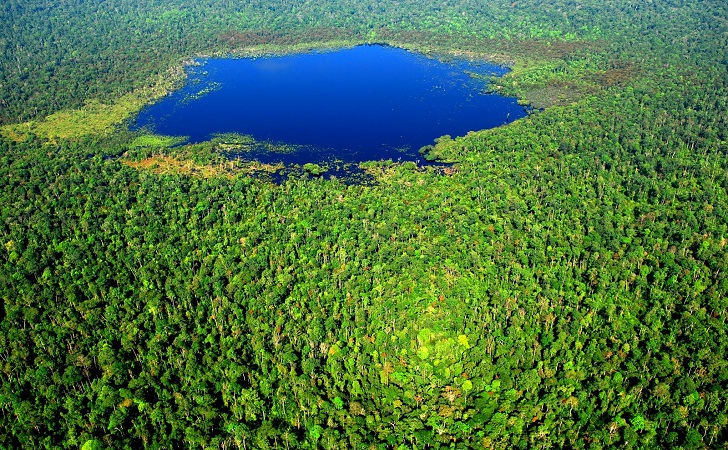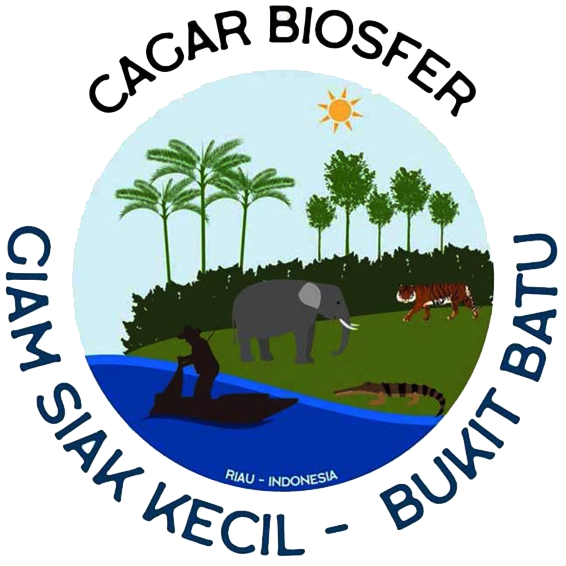
Key messages:
- Giam Siak Kecil Biosphere Reserve Protection is the last buffer gate for biodiversity and peat swamp forest in Riau Province. They assign as a reserve to strictly conserve the landscapes, ecosystems, species, and genetic variation
- A recent visit of the ITTO Project team shows, in terms of peat ecosystem the condition of the peatland ecosystem is under pressure – reinforced land degradation and land conversion. The peatland ecosystem is experiencing damage and quality degradation that influence existing species. Mostly managed in west – open access in east.
- Several efforts have been conducted: LIDAR monitoring system, terrestrial patrol, capacity building for local communities, local livestock cultivation, rehabilitation, building clean water management, and conserve some mammals and birds.
- Embed standards on mandatory instruments such as business licenses, and regulations for protected area management, would bring landholders to take responsibility to tackle the threats.
[BSILHK]_ The Giam Siak Kecil – Bukit Batu (GSKBB) is the 7th biosphere reserve in Indonesia which was declared by UNESCO in 2009 with a total area ±705,271 ha. Located in Bengkalis, Siak, and Dumai Regencies in Riau Province, Indonesia, this area has peat soil dominating the area, many springs essential for human livelihood, and high biodiversity. The core area of this biosphere reserve has unique wetland ecosystems with two complexes of lakes that are connected by the main rivers, namely the Siak Kecil and Bukit Batu Rivers. It can be said that the GSKBB-BR is the last line of protection for ecosystems and biodiversity in the peat areas of Riau.
The GSKBB Biosphere Reserve was established under the UNESCO Man and the Biosphere (MAB) Program to create harmony amongst economic development, community development, and environmental protection, through a partnership between humans and nature. This area is divided into a core area, buffer zone, and transition area. The core area with a total of 178,722 ha consists of two wildlife reserves (Giam Siak Kecil and Bukit Batu) and production forests. Buffer zone with a total area of 222,426 ha consists of industrial forest plantation and other production forests, whereas the transition area with a total area of 304,123 ha consists of an estate-crop plantation, agriculture, community settlements, and plantation forests.
The biosphere reserve concept is an inclusive approach to integrate the conservation of biodiversity and sustainable development on a landscape scale. The implementation of the biosphere reserve concept requires an integrated management strategy and engages stakeholders. There are three basic functions of biosphere reserve: a) a conservation function – to contribute to the conservation of landscapes ecosystems, species, and genetic variation, b) a development function – to foster economic and human development which is socio-culturally and ecologically sustainable, c) a logistic function – to provide support for research, monitoring, education, and information exchange related to local, national, and global issues of conservation and development.
This landscape is home to at least 492 animal species and 189 plant species, severe of which are classified as endangered under CITES – appendix 1. There are including protected and threatened wildlife such as the Sumatran tiger, Sumatran elephants, birds Sundae pangolin, sun bear, clouded leopard, false gharial, marble cat, Malayan tapir, hairy-nosed otter, several hornbill species, and dipterocarp and ramin trees. 162 species of moth are important indicators of forest conditions.
Presently, the biosphere reserve is threatened by changes in land use as well as land and forest fires. This also occurs in the core area, causing the destruction of natural resources and threatening biodiversity and its ecosystem. Habitat loss not only deprives species of their natural home but also destabilizes the site’s ecosystems by disrupting the complex interactions between the mutually dependent species that co-exist there. As such, it represents arguably the greatest threat to Indonesian biodiversity. The main obstacle faced so far is that the sustainable management and conservation of GSK-BR is not implemented effectively.
The GSKBB-BR also holds enormous carbon stocks, reaching 44.3 million tons of CO2 above-ground biomass, and more than 1.71 billion tons of CO2 underground biomass from peat soil, as a contribution to FoLU Net Sink 2030. If this area management is not intervened, it will potentially lose enormous carbon stocks. The local Government of Riau have been developed the document of action plan of FoLU Net Sinks 2030.
Standards for Biosphere Reserve Protection Management
Sustainable management is a necessity to realize the sustainability of the functions and benefits of GSKBB-BR for nature and humans. It requires standards that will serve as a guide. Implant standards to mandatory instruments such as business licenses, and regulations for protected area management, would bring landholders to take responsibility to tackle threats.
Standardization of sustainable GSKBB-BR landscape management will be developed. The standards are expected to take parts of efforts for dealing with pressures, carbon accounting needs, and natural tourism opportunities, as well as for operational business processes for managing areas that should be protected.
To do so, BSILHK collaborated with ITTO, Riau KSDA Center, Sinar Mas APP, Riau Province LHK Service, Man and the Biosphere-MAB, Belantara Foundation, BRIN, Riau Bappeda, and Riau FKKM agreed to start a new action to protect the GSKBB-BR. It was achieved at the ITTO PD 712/13 Rev.3 (F) Project Steering Committee (PSC) meeting “Enhancing the Implementation of Landscape Management of Giam Siak Kecil-Bukit Batu Biosphere Reserve (GSK-BR) in Riau Province of Sumatra Island, Indonesia”, in Bogor May 2, 2023. Then on 3-4 May 2023, visiting site to discuss, and also oversee the current situation. The visit notify – several efforts have been conducted: LIDAR monitoring system, terrestrial patrol, capacity building for local communities, local livestock cultivation, rehabilitation, building clean water management, and conserve some mammals and birds. The open access area happened in east area of the Reserve, illegal occupied by nomads or immigrant.
Biosphere reserve management standards will be the output of the ITTO project. The field notes will form key indicators as a basis for developing management standards for biosphere reserve landscapes, including nature tourism, as well as carbon accounting that will contribute to Indonesia’s FoLU Net Sink.
Other biosphere reserve management activities in Indonesia, whether carried out through ITTO projects such as the Landscape Management Cibodas Biosphere Reserve or not, will be important lessons learned.
Several important things were noted from the PSC meeting that involving women’s participation, abolishing illegal forest activities, rehabilitating occupied land by illegal farmers, and sustainable livelihood, became important lessons in the Landscape Management situation of the Cibodas Biosphere Reserve. This will be valuable information in the preparation of sustainable GSKBB-BR landscape management standards.
Collaboration is the key to success, One of Them Takes a Role as an Engine Entity
In its implementation, BSILHK and Sinar Mas APP as the collaborating agency, as well as partners will carry out further elaboration related to the root causes of tenure control, task force formation in charge of each zone, identify key players, review baselines, set targets, impact of project interventions, standard formulation, as well as promotions and campaigns in the media and international events.
Collaboration and support by stakeholders are the keywords for a successful project. Continuous support from stakeholders could give a significant role in successfully achieving the goal of the project. It means that they will participate in realizing sustainable GSKBB-BR landscape management. They now are thinking how to it efforts would be enhanced, sustain at once.**
